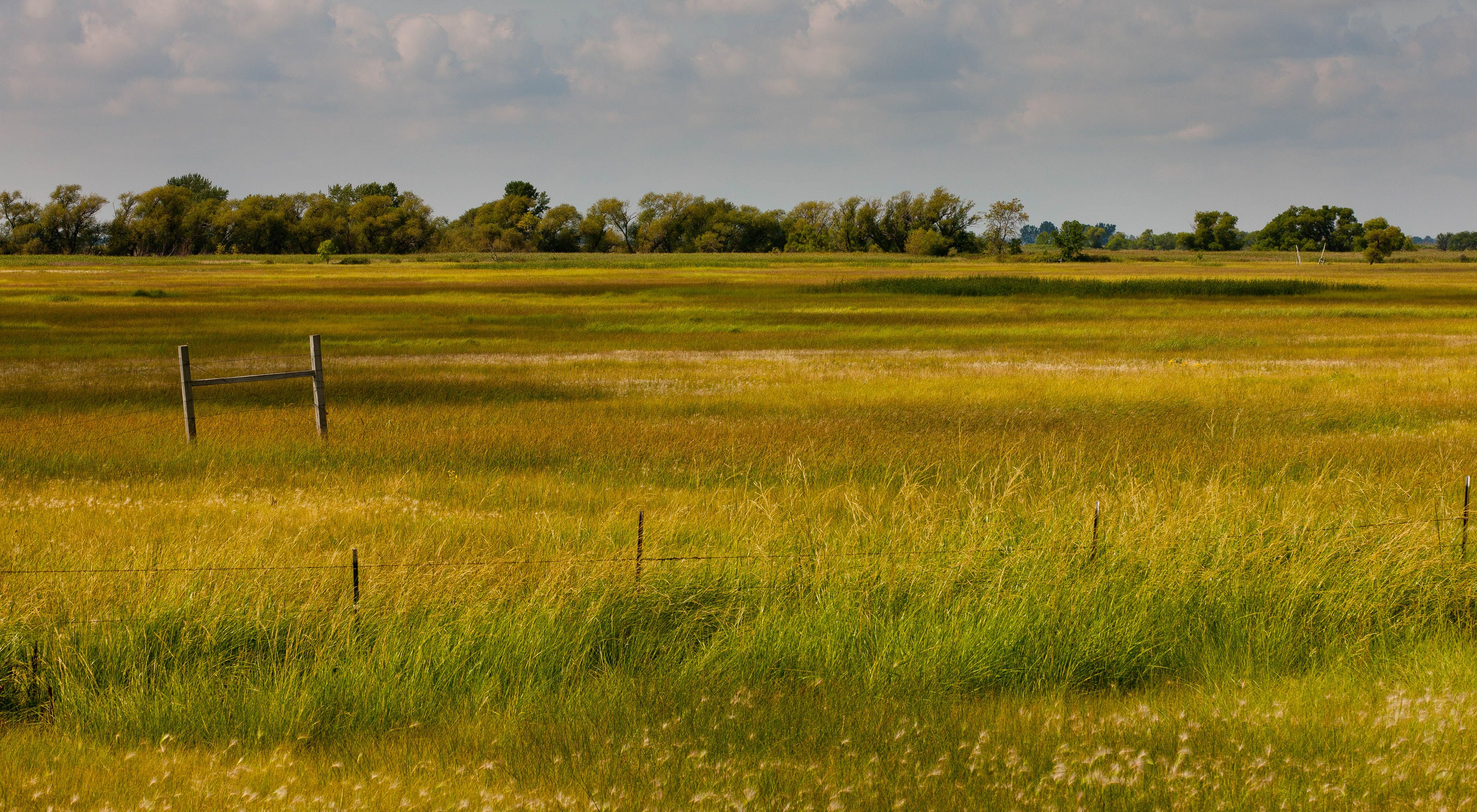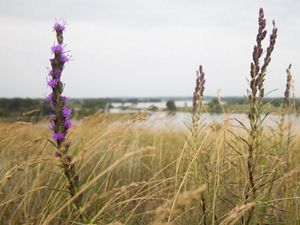How to Choose a Restoration Guide in Minnesota
Here's what you need to know before embarking on a prairie restoration on your land.
Planning a restoration includes assessing the current conditions of your site, deciding on your primary goals for the project and then figuring out how best to achieve the transition from your starting point to desired endpoint.
The work, time and cost needed to achieve your goal will depend on the specific characteristics of your site and how you intend to use the land after it is restored.
There are 20 different restoration guides to choose from, reflecting different combinations of common starting conditions and restoration endpoints in Minnesota’s prairie region. To choose a restoration guide, you will need to address the following questions:
- What is the current vegetation on my site?
- What is the soil moisture of my site?
- What are my primary goals for the restored site?
Each of these factors can influence a restoration in important ways, specifically:
Current vegetation
Much of the work of restoration involves removing or controlling vegetation that you don’t want (i.e. weeds and invasive species) and encouraging the native species that you do want. The existing vegetation has a big influence on what’s needed to remove weeds and prepare the site for seeding, and also on the time and labor required. The types and abundance of plants on a site also influences the native species you select for your seed mix and the method of seeding.
In these restoration guides, five common starting conditions are defined based on current vegetation:
- Crop field
- Annual-dominated field
- Invasive perennial-dominated grassland
- Degraded prairie/meadow
- Woody-invaded prairie/meadow
Resources for Assessing Vegetation
- Invasive Plant Species Management & Identification – MN Dept. of Natural Resources
- Minnesota Noxious Weeds – MN Dept. of Transportation
- Minnesota Wetland Restoration Guide – Board of Water and Soil Resources, NRCS - SDA
- Minnesota Wildflowers: A field guide to the flora of Minnesota
- Northland Wildflowers: The Comprehensive Guide to the Minnesota Region – University of Minnesota
- Wildflowers of the Northern Great Plains – University of Minnesota
Soil moisture
These restoration guides are divided into guides for restoring “meadow” on wetter sites and “prairie” on sites with moderate to dry soil moisture. The appropriate restoration actions and important considerations for each type of target community are reflected in the recommended protocols.
Soil moisture influences both the types and abundance of species that can grow on a site. The prairie communities that occur in wet lowlands are quite different than those that occur on dry uplands. Your site’s soil moisture will influence the type of prairie that can be restored and, subsequently, the seed mix that you select for your restoration.
Soil moisture can also influence the restoration actions required. Different weeds and invasive species tend to be common on wet vs. dry sites, requiring different protocols for removal. The timing of restoration activities may be limited on very wet sites by the presence of saturated soils at times during the year. In some cases hydrologic restoration such as breaking tiles or plugging ditches will be part of the project.
Project goals
There are many different reasons why you might choose to restore land to prairie. Some common goals for prairie restoration include:
- Create a visually appealing “wild” landscape
- Create habitat for wildlife, such as waterfowl, grassland birds and pollinating insects
- Provide low-impact recreational opportunities, such as hunting
- Protect rare and endangered plant species
- Expand and buffer existing native prairie
- Create pasture for grazing animals
- Develop other grassland-based commercial opportunities, such as native seed harvest
Your anticipated uses for the restored site will influence important decisions such as:
- How thoroughly the site is prepared prior to seeding
- The number and types of species planted
- The levels of weeds or invasive species considered tolerable on the restored site
In these guides, restorations are divided into two general categories: “utility restorations” and “conservation restorations”, reflecting different project goals common to prairie restorations in Minnesota.
These guides are not intended to be an exact prescription for your site. Many additional factors can influence a restoration. Before beginning work on your restoration project, consult with a restoration professional who can assist you with a more detailed site assessment and guide you through goal setting. They can also help you develop a specific restoration plan tailored to your project needs.
In some cases, different seed mixes will be needed for different parts of the state even if the current vegetation, soil moisture and intended use are the same. Minnesota has been divided into Ecological Sections reflecting different environmental conditions and natural habitats. Seed mixes may also need to be modified if particular species won’t grow well in certain Ecological Sections.

How to choose a restoration guide
The starting condition of your project site is defined by the current vegetation (question 1 below). The restoration endpoint is defined by the site’s natural (i.e. not artificially drained) soil moisture levels and your project goals (questions 2 and 3, respectively).
For each of the following questions, choose the description that best matches your site. In some cases, your site may include areas that match more than one description. Choose the description that best matches your site overall, or, when possible, select different restoration guides for each distinctly different area of your project site. Resources to aid in assessing vegetation are listed on page 4. Consult with a restoration professional if you need additional assistance in assessing your site’s current conditions.
1. What is the current vegetation on my site?
a. Crop Field: Little to no standing vegetation present on site. Crop plants have been recently harvested (i.e. this past growing season) and soils are bare, although light to heavy crop residue may be present.
b. Annual Dominated Field: Vegetation on site is predominately annual weeds (>75% cover), such as foxtail, barnyard grass and ragweed. Vegetation may be sparse, and bare soil may be present, as on a previously cropped field that has been left fallow. Few or no invasive perennial weeds or desired native prairie species are present on site.
c. Invasive-Perennial Dominated Field: Site is dominated by invasive non-woody perennial weeds (>75% cover), such as smooth brome, reed canary grass, birdsfoot trefoil, and sweet clover. Few or no desired native prairie species are present, and the site is not occupied by rare or endangered plant or animal species. Presence of undesired trees and shrubs is minimal (<10% canopy cover), although small woody seedlings may be present (stem diameter < ½ inch).
d. Degraded Prairie/Meadow: Site has significant cover (25-75%) of both desired native prairie species and invasive non-woody perennial weeds, such as smooth brome, reed canary grass, birdsfoot trefoil, and sweet clover. Site may be a degraded native remnant (unplowed prairie), a native pasture that was overseeded with exotic perennials, or a low-diversity planted prairie that has become invaded. Presence of undesired trees and shrubs is minimal (<10% canopy cover), although small woody seedlings may be present (stem diameter < ½ inch).
e. Woody-Invaded Prairie/Meadow: Vegetation is predominately native prairie species (>75% cover) but with greater than 10% canopy cover of undesired trees and shrubs (stem diameter > ½ inch), such as red cedar, sumac, aspen, boxelder, Siberian elm, and sandbar willow. Prairie vegetation may be sparse in areas as a result of shading. Herbaceous (non-woody) perennial weeds are minimal (<25% cover). Site may be a degraded native remnant (unplowed prairie) or a planted prairie that has become invaded by woody species.
2. What is the soil moisture of my site?
a. Soil is moderately moist to dry across most or all of the site and typically does not experience substantial ponding. Soils are not saturated for more than 2 weeks following spring snowmelt. Soil moisture conditions are not the result of artificial drainage. (Restoration end pont = prairie)
b. Soil is wet to moderately wet across most or all of the site and may experience ponding after heavy rains. Soils are typically saturated for 3-8 weeks following snowmelt in the spring. If the site has been artificially drained, these soil conditions represent the conditions prior to drainage. (Restoration end point = meadow)
3. What are my primary goals for the restoration site?
a. Utility: Restore an economical prairie that maximizes palatability and productivity in order to support native grass-based income-generating activities, such as grazing, haying or commercial seed harvest.
b. Conservation: Restore diverse, high-quality prairie in order to buffer and expand existing native prairie and provide habitat for rare plant species and/or native prairie wildlife, such as grassland birds and butterflies. Grazing or seed collection may be conducted as part of a carefully designed management plan, but the primary purpose of such activities is to maintain the quality of the prairie as opposed to generating revenues.
Sign up for Nature News
Get monthly conservation news and updates from Minnesota right to your inbox.





